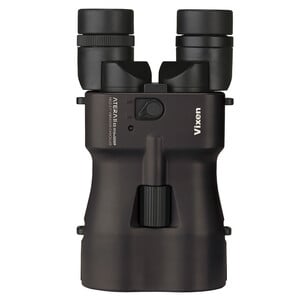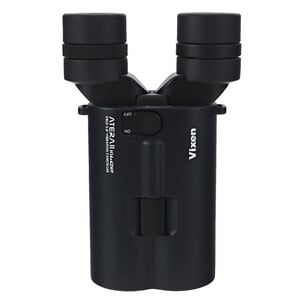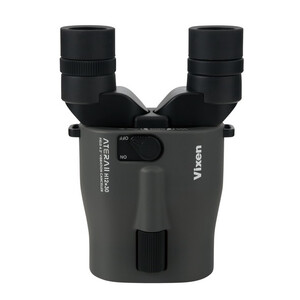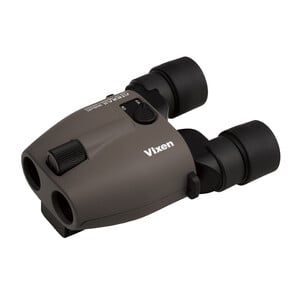Expert Review: VIXEN ATERA II ED 16x50 WP Image-Stabilized Binoculars
A pair of binoculars with high magnification and image stabilization. Not just for watching birds or animals at the edge of the forest, but also the moon and stars? Our two reviewers share their experiences.
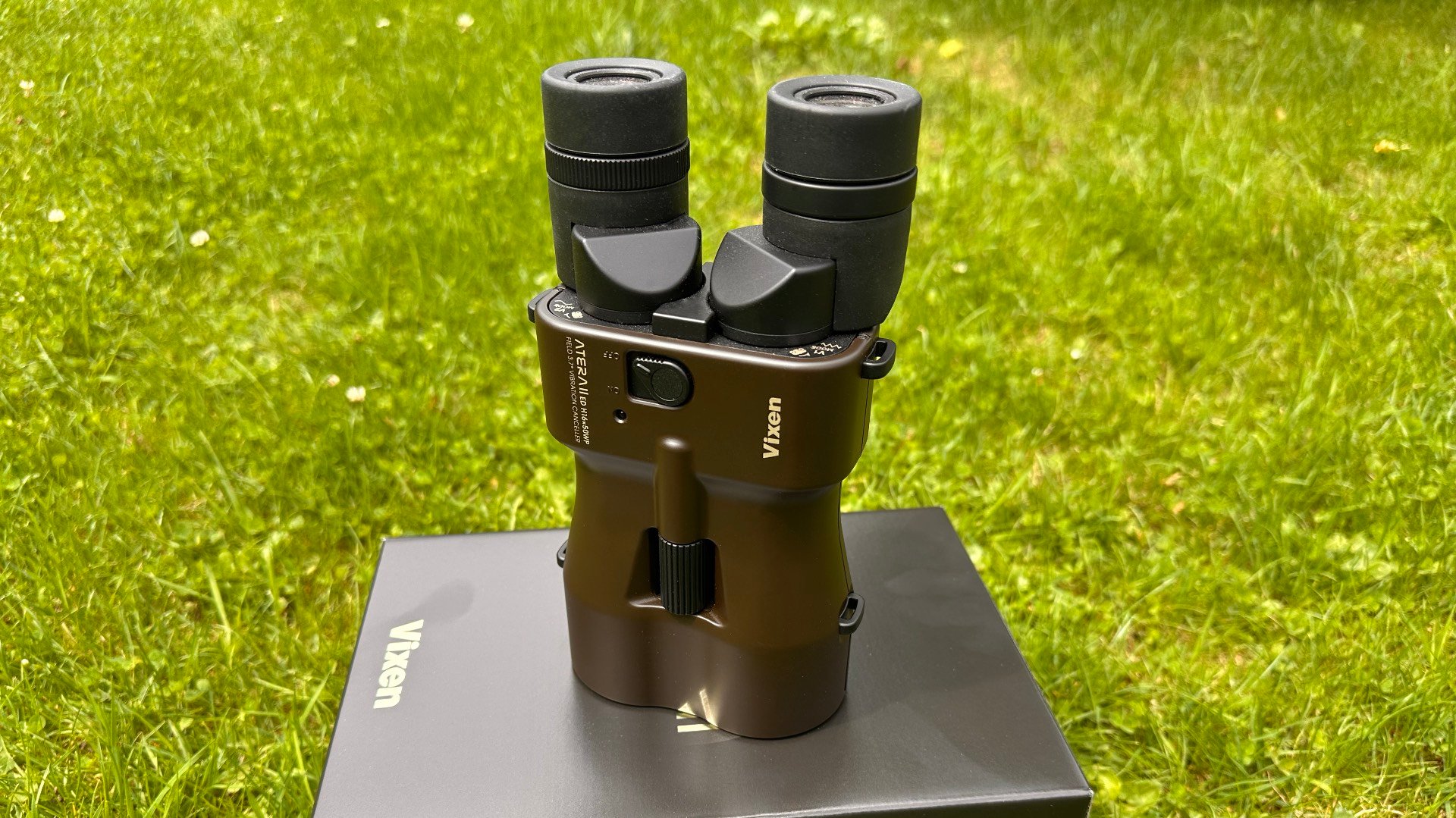
Today, we’re taking a closer look at the Vixen ATERA II ED 16x50 WP—from the perspective of a nature observer and photographer, and from the perspective of a stargazer.
The Technology Behind the Clear Image
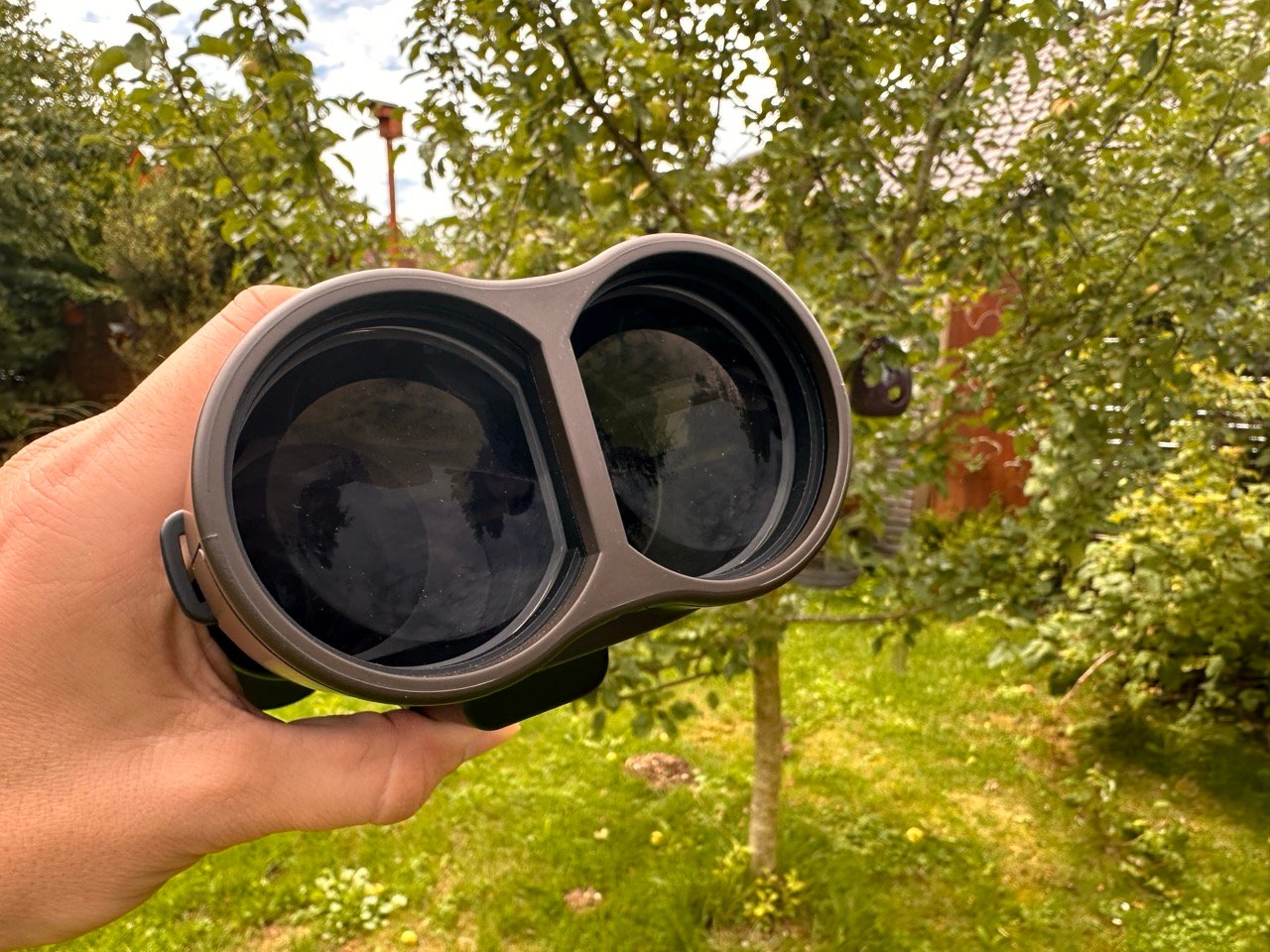
With these binoculars, you can bring even the smallest details up close—16x magnification makes it possible, whether you’re watching a bird at the edge of the forest or observing a distant object. Combined with the large 50 mm objective lens, it delivers a bright image even at dusk. The high-quality ED glass used for the objective lens minimizes chromatic aberration to an absolute minimum.
Always a steady view: The image stabilizer as your invisible assistant
The highly effective image stabilizer offers you two modes: The first mode smooths out subtle vibrations. The binoculars stay steady, even if your hands are shaking, so you can take full advantage of the magnification and keep every detail in clear view. The second mode is for rougher conditions: it compensates for stronger movements, for example, when you’re quickly scanning the landscape or standing on a boat in choppy water. The image stays stable, even when everything around you is in motion.
Ready for Any Weather: Outdoor Shield
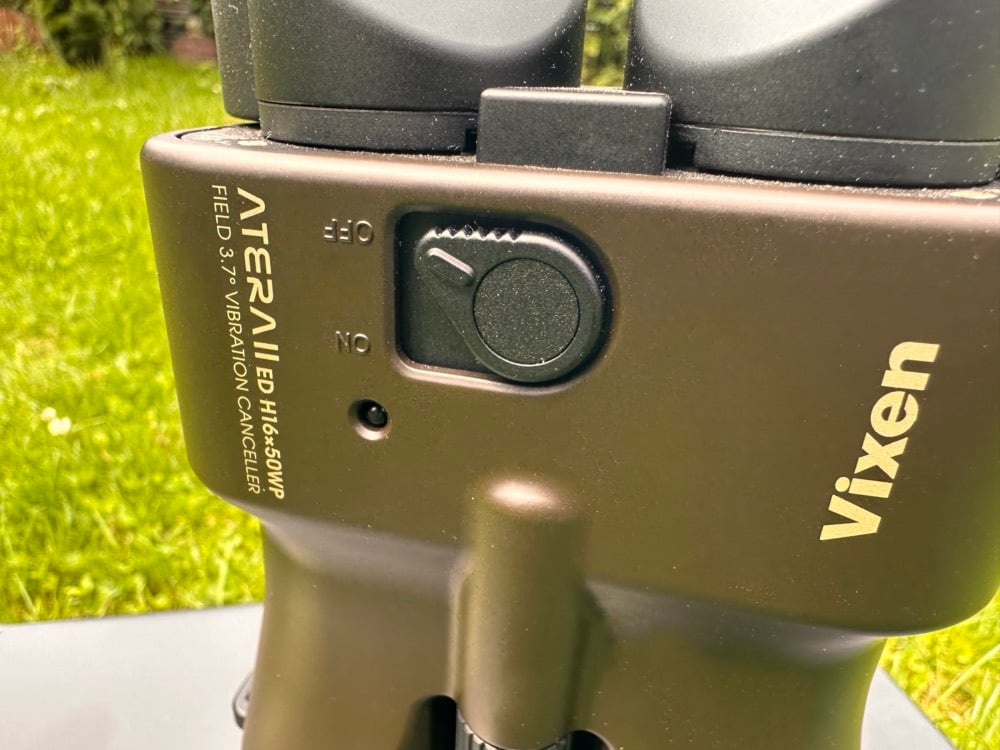
Whether it’s rain, splashes, or storms—these binoculars can handle it all. Thanks to “WP” certification and gas filling, the interior stays dry even if a wave hits or the sky opens up. The objective and eyepiece lenses are treated with a special water-repellent coating: droplets simply roll off, and dirt wipes away effortlessly. This means you always have a clear view—no matter the weather.
The binoculars are waterproof (“WP”), featuring seals and a gas filling. So you don’t have to worry if it pours with rain or a wave splashes over the binoculars: no water gets inside. The outer surfaces of the objective and eyepiece lenses are coated with a hydrophobic layer—water beads up and rolls right off, and dirt comes off the lenses with ease.
To operate the image stabilizer, you’ll need two AAA batteries, which are available everywhere—even at a gas station, if necessary. A handy feature is the automatic shutoff for the image stabilizer after 90 minutes, helping to preserve battery life in case you forget to turn it off.
Conclusion from the Nature Observer: Stefan
Optics:
The ED optics are impressive across the board. Edge sharpness is excellent for binoculars with this level of magnification. The binoculars deliver outstanding contrast, whether you’re looking at foliage or tree bark.
Image Stabilizer:
The technology works flawlessly. At home, most people use 8x binoculars, since 10x often becomes too shaky. But the ATERA II makes high magnification practical. The slightly “floating” image takes a bit of getting used to at first, but you adjust quickly.
Mechanics:
The focus wheel is very wide, making it easy to use even with large hands, cold fingers, or gloves. The gearing could be a bit smoother, but that’s a matter of personal preference.
Feel:
The binoculars fit very comfortably in the hand thanks to their design. However, the smooth plastic housing doesn’t feel especially premium—it doesn’t quite match the quality of the optics or mechanics.
Included Accessories:
The package includes a carrying case, a neck strap, and additional colorful straps with a hand pad. This lets you use the binoculars much like a video camera.
Conclusion from the Astronomy Observer: Marcus
Optics:
The 16x magnification makes these binoculars especially exciting for astronomical observations. Double stars like the “rider” in the Big Dipper or the double star in the constellation Lyra can be easily separated and observed. Deep-sky objects also benefit from the high magnification: M13 appears as a large, calm nebula, much bigger than in standard binoculars. Other objects, such as h and Chi Persei, M3, M27, or the Wild Duck Cluster, appear as bright, well-defined targets. Overall, the optical quality is very good: stars remain sharp across most of the field, with only slight softening at the edges. Some minor color fringing is visible on very bright stars.
Image Stabilizer:
Without stabilization, it’s nearly impossible to hold the image steady at 16x magnification. But with the image stabilizer turned on, the view becomes exceptionally stable—even handheld. There’s still a slight residual movement, but the difference is enormous and allows for spontaneous, detailed observation without a tripod.
Mechanics:
The housing feels a bit bulky and is made of smooth plastic, which makes it less grippy. Still, the shape is ergonomic and sits comfortably in the hand. The focus wheel is easy to reach but feels a bit delicate. Plus points go to the twist-up rubber eyecups, the diopter adjustment, and the on/off switch with LED for image stabilization.
Feel:
Despite the unusual design, the binoculars feel balanced and comfortable to use. Operation is intuitive. The smooth housing doesn’t give a premium impression, but this is offset by good ergonomics.
Included Accessories:
Perfect for spontaneous observations or traveling when you want to avoid using a tripod.
My Conclusion:
The Vixen ATERA II ED 16x50 WP is a solid recommendation for amateur astronomers who value high resolution and magnification but also want maximum portability.
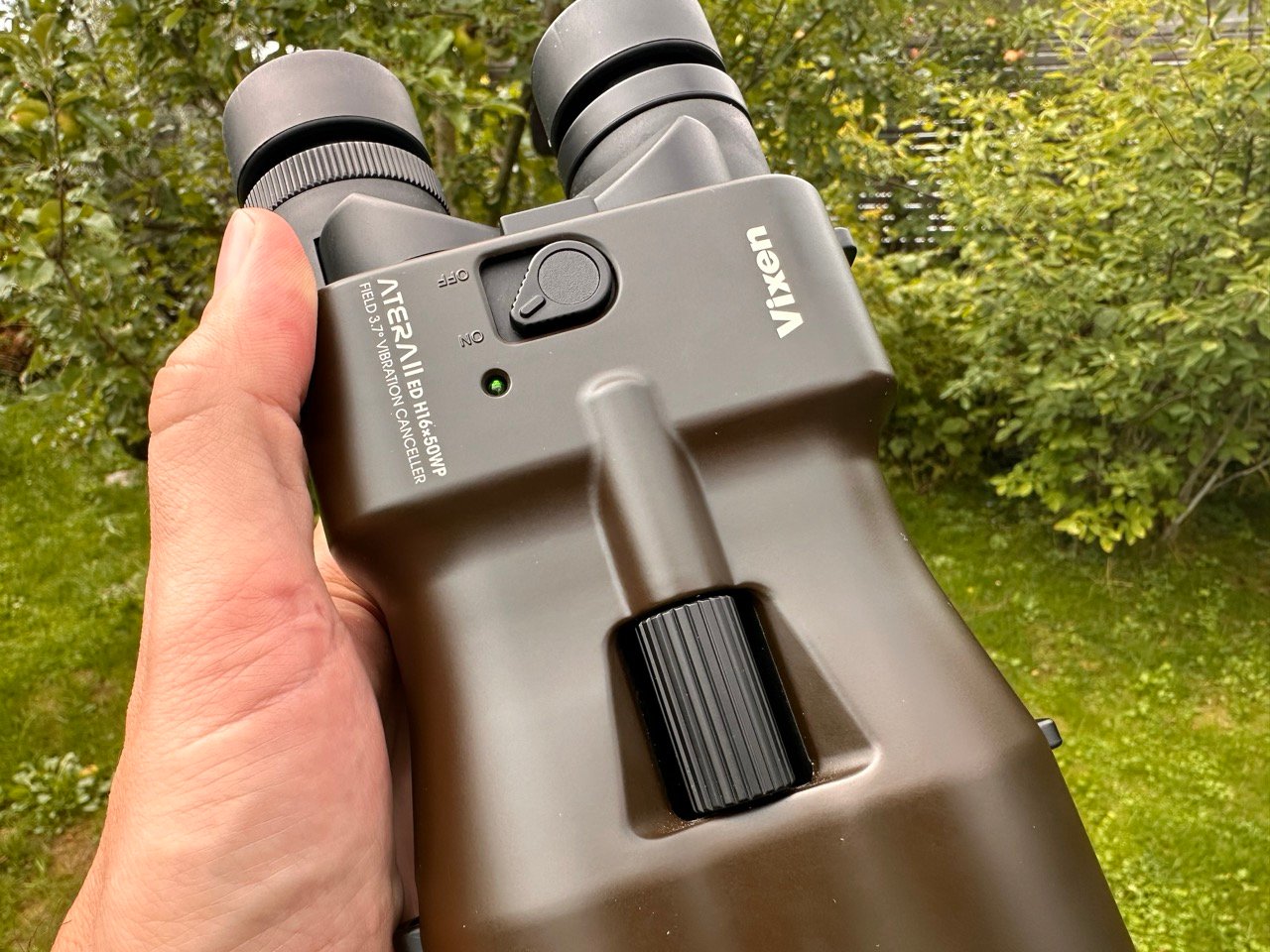 The binoculars feel comfortable in the hand and have an ergonomic design.
The binoculars feel comfortable in the hand and have an ergonomic design.Overall Impression:
Outstanding on the inside, a matter of taste on the outside. The ATERA II brings the world as close as you want it to be. Whether it’s nature or the night sky—give it a try! If you value a steady image, high magnification, and comfort, the VIXEN ATERA II ED 16x50 WP is definitely worth considering, for both nature and stargazing.
By Stefan Rieger – with contributions from Marcus Schenk
Author: Stefan Rieger
Stefan is a qualified wholesale and international trade specialist. He has been involved in the photographic industry since 2000, before wholly concentrating on sports optics and tripods in 2007. Stefan has been taking care of these product segments for us as Category Manager since January 2014.
Since getting his hunting permit in 2011, he loves to spend his free time outdoors; hunting, fishing or armed simply with his photographic equipment.
After a break, Stefan rejoined us in 2023 and is responsible for our sports optics, camera tripods and night vision instrument product groups, together with anything else you might need for nature watching and hunting.


